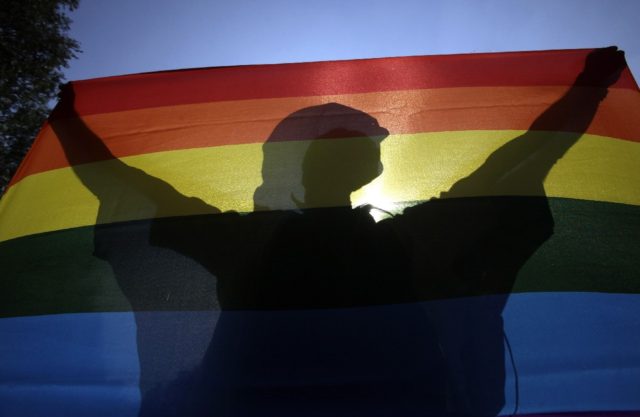Lawmakers in Spain and Scotland passed transgender rights bills Thursday allowing anyone 16 and over to change their gender on official documents.
In Spain they will eventually be able to change gender on their ID card with a simple declaration.
And in Scotland they will no longer need a gender dysphoria diagnosis.
Here’s a roundup of the situation worldwide on the status of transgender people, who identify as a different gender to the one they were given at birth.
Still early days
The World Health Organization (WHO) reclassified transgenderism as recently as 2019 so that it was no longer considered a mental disorder.
According to the International Lesbian and Gay Association (ILGA), at least 25 UN member states “allow for legal gender recognition without prohibitive requirements.”
But only around 15 countries allow transgender people to change their status with a simple declaration.
In some countries, the legal and administrative process can take years and may include requirements such as psychiatric diagnosis, hormone treatment, gender reassignment surgery or even sterilisation.
Argentina, the pioneer
Argentina has led the way on transgender rights, allowing a change of gender on national identity cards with a simple declaration since 2012.
Several Latin American countries have since adopted similar laws, including Uruguay, Colombia, Bolivia, Ecuador and Peru.
In Chile the gender identity law came into force in 2019, having gained traction following the international success of the country’s Oscar-winning film “A Fantastic Woman”, which starred transgender actress Daniela Vega.
Denmark, first in Europe
In 2010 the Council of Europe adopted a resolution calling on member states to guarantee the rights of transgender people to obtain official documents with their chosen status without requiring other procedures such as sterilisation, surgery or hormone therapy.
Four years later Denmark became the first European country to allow people to apply for a legal gender change and obtain a new gender status on their identification card with a simple declaration.
Other European countries have since followed, including Malta, Sweden, Ireland, Norway and Belgium.
France, which in 2010 was the first country worldwide to remove transgenderism from its list of mental illnesses, has since 2017 allowed transgender people to change their status by asking a court.
In June 2022 Germany unveiled plans to make it easier for trans people to officially change their first name and gender.
Third gender option
Some countries, particularly in South Asia, have traditionally recognised a third gender that is neither male nor female.
Pakistan in 2009 became one of the first ever to legally recognise a third sex.
Nepal in 2013 added a transgender category on citizenship certificates, which act as a national identity card. The same year Australia allowed its citizens to add a third category to passports.
In 2014 India’s Supreme Court recognised the existence of a third gender.
From 2018 transgender people have been able to register to vote as a third gender in neighbouring Bangladesh.
And the same year Germany legalised a third gender on birth certificates.
In the US in 2021, the State Department eased gender selection on passports allowing transgender passport holders to use “X” for gender. The move began officially in April.

COMMENTS
Please let us know if you're having issues with commenting.